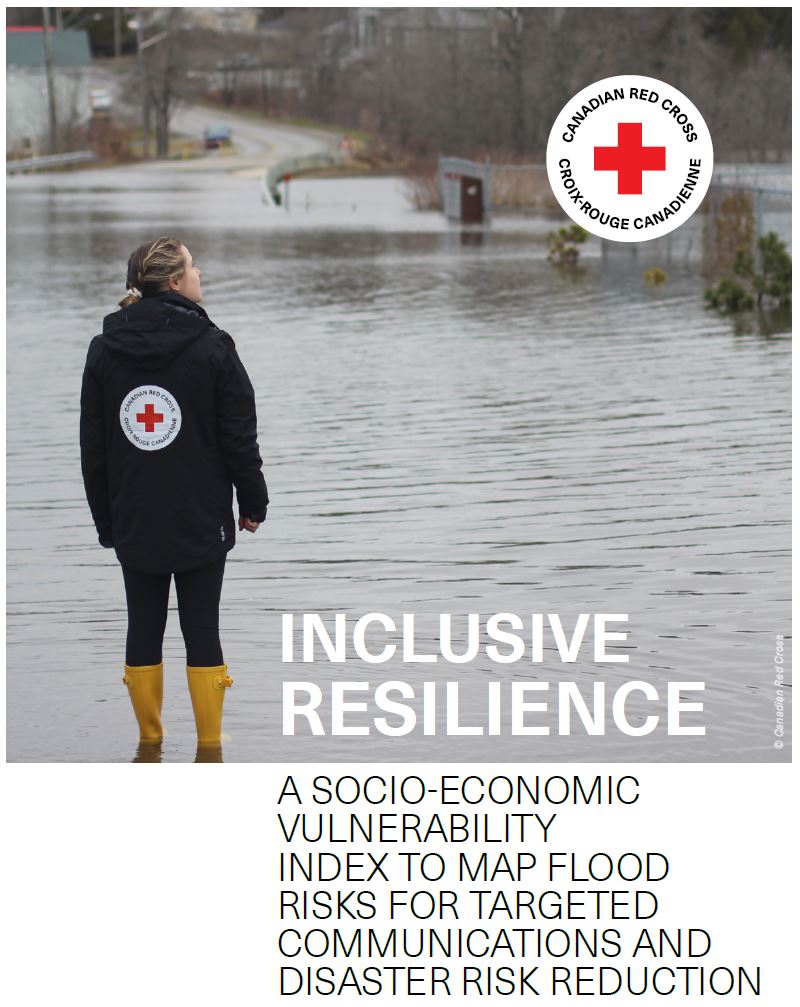April 2024
Jean Andrey, Principal Investigator
Jason Thistlethwaite, Co-Investigator
Liton Chakraborty, Co-Investigator
Kasra Motlaghzadeh
Mohammad Sina Jahangir
Felicia Watterodt
With Bryan Castillo and Kalindi Shah
This research is part of the Inclusive Resilience: Driving Risk Awareness to Action and Building Resiliency for Vulnerable Canadians in High-Risk Areas project, funded by the Canadian Red Cross.
The Canadian Red Cross engaged Partners for Action at the University of Waterloo to research socio-economic vulnerability in order to better understand who may be most impacted by natural hazards like floods, wildfires, and earthquakes.
Social vulnerability is not a permanent condition. It can be assessed by indicators that point to conditions that make it harder for people to prepare for, cope with and recover from a hazard during a specific time frame.
P4A has developed a Social Vulnerability Index (SoVI) that combines 50 indicators from the Canadian Census with maps web-based GIS visualizations to provide a spatial analysis of socio-economic vulnerability.
This SoVI can help identify specific geographic areas within communities that will most likely need support before, during, and after hazardous events which are becoming more common and intense with climate change.
About the study
Flood risk is partly due to social vulnerability. Understanding and mapping the drivers of this vulnerability is critical in developing inclusive policies that reduce risk and strengthen resilience for all Canadians.
We are applying our cutting-edge Canadian Social Vulnerability Index (SoVI) methodology to flood exposure analysis to identify areas of high and moderate risk.
The result is web-based maps of hotspots of social vulnerability and flood exposure for six communities:
(1) Richmond, British Columbia
(2) Thompson, Manitoba
(3) Ottawa- Renfrew, Ontario
(4) Ottawa-Gatineau, Ontario
(5) Moose Factory, Ontario and,
(6) Bay St. George, Newfoundland and Labrador
These maps can be used to inform policies to address the hotspots for targeted solutions and adopt risk-based hazard management policies across Canada.
In our current research, we have been using 50 social indicators from the 2016 Census grouped into components to help us understand aspects of vulnerability. For example:
The neighbourhood economic insecurity index measures the distribution of the population that suffers from insufficient economic resources to sustain a median level of social welfare.
The neighbourhood instability index measures the proportion of the population that is unlikely to recover from unexpected shocks or disruptions.
Public Safety Canada has funded this project. The views expressed herein do not necessarily represent the views of Public Safety Canada. The authors acknowledge the support of the Canadian Red Cross in providing input and support to define the research objectives and methodologies for this report. Red Cross also provided input on the design of data collection tools and guidance on inclusive approaches for the research. Together with Partners for Action, the Red Cross engaged in knowledge mobilization on research finds and supported the development of recommendations for the final report. The Canadian Red Cross, in partnership with Partners for Action, would also like to thank the following organizations who have supported this work: Public Safety Canada, BC Earthquake Alliance, FireSmart Canada, Native Women’s Association of Canada, and community partners across Canada.
